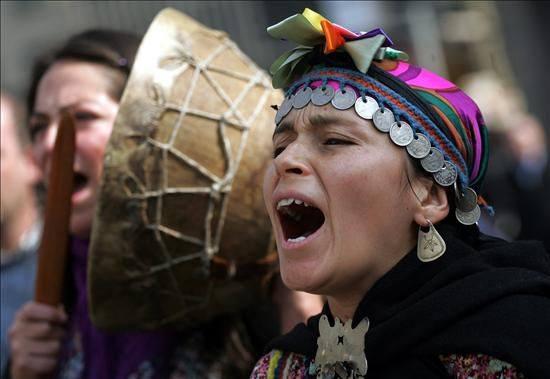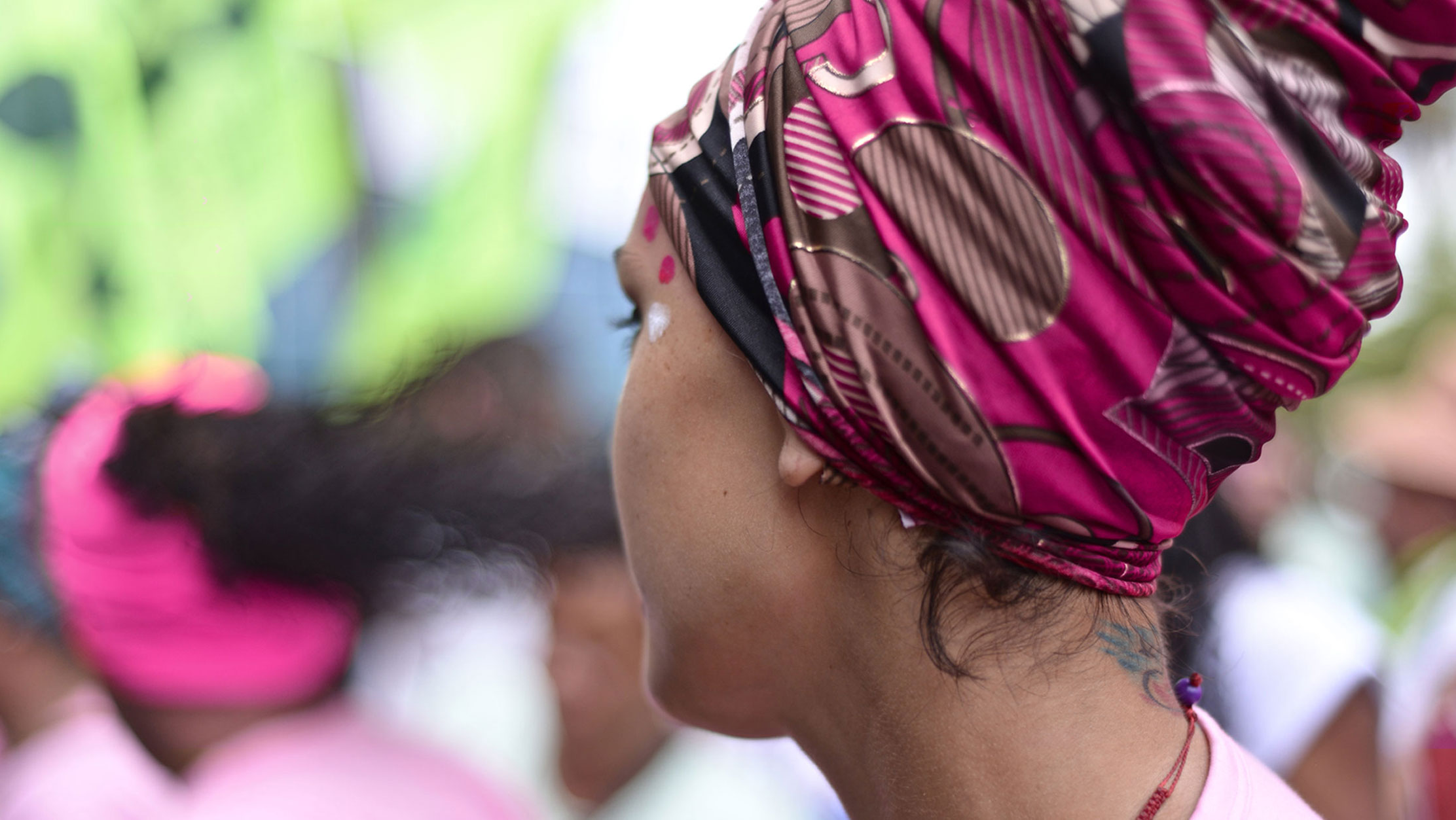FRIDAY FILE: The 2013 World Conference of Indigenous Women "Progress and Challenges Regarding the Future we Want" held from October 28-30 2013, in Lima, Peru, was attended by about 300 Indigenous women leaders from Africa, Asia, Latin America, North America, the Artic, Russia and the Pacific.[1]
By Gabriela De Cicco
AWID talked to Mirna Cunningham Kain, President of the Permanent Forum on Indigenous Issues, and AWID Board Member, about the conference, their agreed agenda and the issues Indigenous women consider most urgent for their collective.

AWID: What were the outcomes of the Conference?
Mirna Cunningham (MC): This was a landmark event as it gathered Indigenous women from the seven socio-cultural regions across the world to discuss the basis of a common Indigenous women's agenda for the coming years.
We took account, not only of local or national realities faced, but also global processes affecting Indigenous women. Starting from the realities experienced at country level, we were able to agree on a common position for the next World Conference on Indigenous Peoples, the first ever, that will take place in September 2014. We identified Indigenous women's priorities on sexual and reproductive rights, considering the Cairo Agenda review, identifying which aspects we need to go deeper into in terms of Indigenous women's empowerment and towards their further engagement in other upcoming processes, including the Beijing review in 2015.
Our plan is to include all the elements that we agreed, on in the Post-2015 Development Agenda that is currently being negotiated. We want this Agenda to apply an intercultural perspective in its analysis, including ethnicity-disaggregated information, to understand the different issues affecting, impacting or benefiting different groups of women, in all their diversity across the world.
In that sense, it was an important meeting because it was not just one, but all the seven regions. It was not just one age group meeting, but young, adult and elderly women all attended, which facilitated intergenerational dialogue. And one of the most important aspects of the meeting was highlighting the need to continue working on the issue of urban and rural women, as Indigenous peoples continue to become urbanized around the world.
AWID: What are the key issues that Indigenous women will advocate to be included on the agendas of the various reviews taking place in 2014 and 2015?
MC: The first burning issue is that of territorial rights. If the right to jurisdiction for Indigenous peoples to exercise their free determination is not made clear, that is, if States fail to recognize territorial rights and the rights to free determination for Indigenous peoples, enabling conditions for Indigenous women to fully exercise their rights will also be absent.
The second issue relates to the different forms of violence suffered by Indigenous women. Our position is that of zero tolerance for any kind of violence, from violence that takes place in the home to institutional violence caused by structural factors like militarization; or the imposition of programs with a single culture focus.
The final burning issue concerns sexual and reproductive rights (SRR). We affirm that Indigenous women are overburdened by the serious lag in SRR, which translates into the high pregnancy rates in women under 20 years of age and ignorance about SRR. The lack of truly appropriate sexuality education programs has resulted in an increase in sexually transmitted diseases, including HIV and AIDS.
While these are the big issues, we also discussed Indigenous women's political participation and the need to go deeper into diversifying quotas or affirmative action measures and the need to continue developing Indigenous women's skills and forging alliances with the women's movement and other relevant actors to ensure that these rights are indeed realized.
The reality, however, is that many of the things we were discussing do not depend only on us, but rather require a serious commitment from other actors. In order to ensure was that we would not just be talking among ourselves we developed a communications strategy to share our message with governments, other women's groups and the rest of society. A communications strategy from now until the 2014 Conference will allow us to keep the issue of Indigenous women’s rights on the global information agenda.
Finally we developed a Plan of Action, including activities and strategies to address the issues I mentioned above. We will be sharing our position with governments, UN agencies and other stakeholders, taking advantage international meeting spaces, including the next Commission on the Status of Women (CSW) session of the Expert Meeting on Indigenous Peoples' Sexual Health and Reproductive Rights that the Permanent Forum on Indigenous Issues is organizing next January, and the next Permanent Forum meeting in May 2014. We also want to make good use of the events organized by other women's groups, such as the next AWID conference.
AWID: What are the next steps?
What we have developed is a sort of road map to introduce our issues in order to achieve a greater commitment from States and other stakeholders to contribute resources so that our Plan of Action can be implemented.
Internally we discussed how to strengthen the Indigenous women's movement - how to strengthen regional organizations, the articulation between them and the Young Indigenous Women's networks, and the alliance between Indigenous women, feminist women and other women's organizations. So we have planned internal and also external actions to implement our goals.
This Plan of Action has to be good for the next three years. That is, from now until 2016. The idea is that important upcoming global events can be incorporated into this Plan of Action and we expect that several of the elements in the Plan of Action will be integrated into the Outcome Document of the September 2014 World Conference, the document resulting from the Population and Development Conference (April 2014) document, the Beijing outcome document and - of course - the Post-2015 document. We see this Plan of Action as a tool for negotiations in all these processes.
Further reading:
[1] The Conference was organized by the Foro Internacional de Mujeres Indígenas, Enlace Continental de Mujeres Indígenas de las Américas, Asia Indigenous Peoples Pact, African Indigenous Women's Organization, Alianza de Mujeres Indígenas de Centroamérica y México, Asia Indigenous Women's Network, Pacific Indigenous Women's Network, Indigenous Information Network and CHIRAPAQ (Centro de Culturas Indígenas del Perú). It was supported by the UNPFII Secretariat, UN Women, FAO, UNDP, Ministerio de Cultura, Christensen Fund, Global Fund for Women, Tamalpais Trust, AECID, Fondo Indígena, IWGIA, Channel Foundation, Mama Cash and Ford Foundation.
